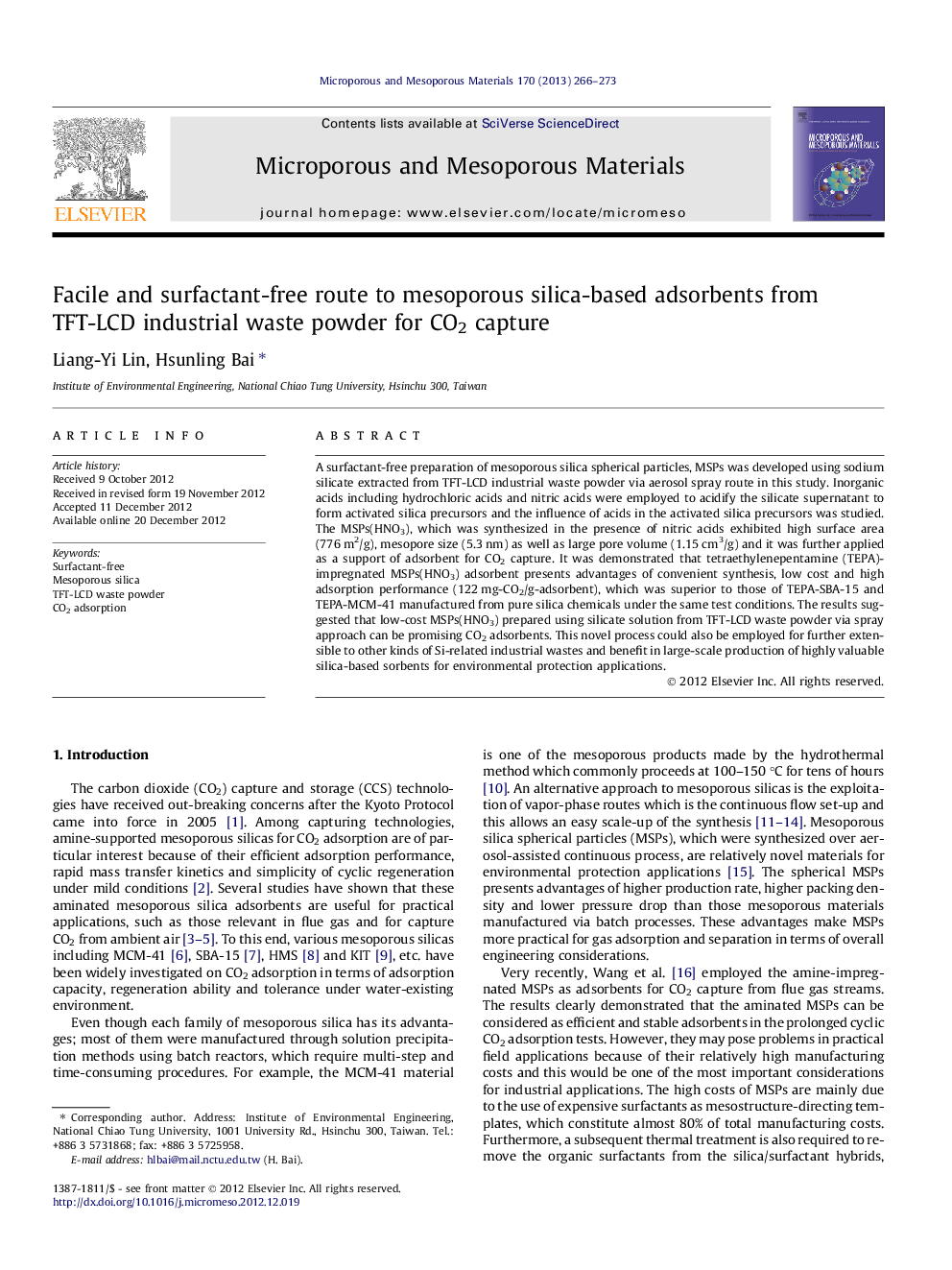| Article ID | Journal | Published Year | Pages | File Type |
|---|---|---|---|---|
| 73580 | Microporous and Mesoporous Materials | 2013 | 8 Pages |
A surfactant-free preparation of mesoporous silica spherical particles, MSPs was developed using sodium silicate extracted from TFT-LCD industrial waste powder via aerosol spray route in this study. Inorganic acids including hydrochloric acids and nitric acids were employed to acidify the silicate supernatant to form activated silica precursors and the influence of acids in the activated silica precursors was studied. The MSPs(HNO3), which was synthesized in the presence of nitric acids exhibited high surface area (776 m2/g), mesopore size (5.3 nm) as well as large pore volume (1.15 cm3/g) and it was further applied as a support of adsorbent for CO2 capture. It was demonstrated that tetraethylenepentamine (TEPA)-impregnated MSPs(HNO3) adsorbent presents advantages of convenient synthesis, low cost and high adsorption performance (122 mg-CO2/g-adsorbent), which was superior to those of TEPA-SBA-15 and TEPA-MCM-41 manufactured from pure silica chemicals under the same test conditions. The results suggested that low-cost MSPs(HNO3) prepared using silicate solution from TFT-LCD waste powder via spray approach can be promising CO2 adsorbents. This novel process could also be employed for further extensible to other kinds of Si-related industrial wastes and benefit in large-scale production of highly valuable silica-based sorbents for environmental protection applications.
Graphical abstractFigure optionsDownload full-size imageDownload as PowerPoint slideHighlights► Mesoporous silica, MSPs(HNO3), was prepared from TFT-LCD waste via spray route. ► The costs of MSPs(HNO3) were drastically reduced without using extra surfactants. ► MSPs(HNO3) fabricated from TFT-LCD waste can be a cost-effective CO2 adsorbent.
